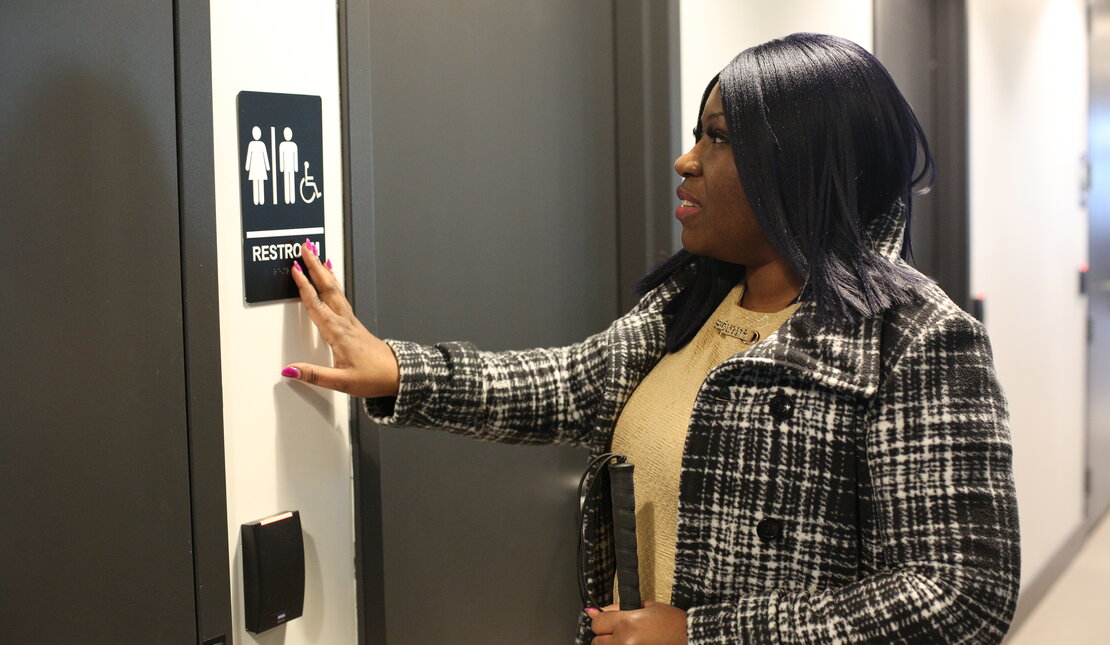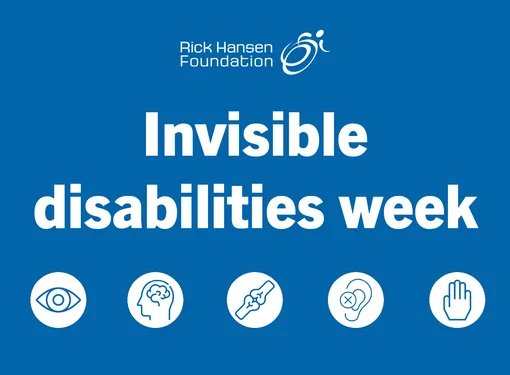Seeing and Hearing Through Touch: A Closer Look at Deafblindness
Every June, National Deafblind Awareness Month invites Canadians to pause and learn about a remarkable yet often overlooked community. It’s always a time to highlight the strength and contributions of people who are Deafblind, and to dispel common misunderstandings about what it means to live with both vision and hearing loss.
What Does Deafblindness Mean?
Deafblindness doesn’t look the same for everyone. It’s not always a total loss of hearing and sight. Some people may have limited hearing but no vision, others might see shapes or light but can’t hear, and many experience some degree of both. This condition can be present from birth (known as congenital Deafblindness), or it can develop later in life due to age or illness (referred to as acquired Deafblindness).
According to the Canadian Helen Keller Centre, more than 400,000 people in Canada live with Deafblindness in some form. Each individual’s experience is unique, and so are the ways they navigate their world.
How Do People Who Are Deafblind Communicate?
For those of us who rely on sight and/or sound to learn, move, and connect, the idea of communicating without them may seem daunting. But for people who are Deafblind, there are a variety of effective and creative ways to communicate, including:
- Two-hand manual alphabet: Letters are spelled into the palm using both hands in a specific sequence.
- Print-on-palm: Words are written letter by letter onto the hand.
- Tactile sign language: A method where one person’s hands rest on another’s to feel signs and gestures.
- Braille: A raised-dot reading and writing system read through touch.
- Assistive technology: Tools like screen readers, braille displays, or speech-to-text apps enable connection and independence.
- Intervenors: Trained professionals who help convey information from the environment, acting as a bridge between the individual and the world around them.
These strategies help people who are Deafblind live more independently, pursue their goals, and engage in relationships, work, and learning.

Challenging Common Myths About Deafblindness
When people don’t understand a condition, assumptions often fill the gaps. Here are six widespread myths about Deafblindness, and the truth behind them:
- Deafblindness always means total blindness and deafness.
In fact, most people who are Deafblind have some remaining vision or hearing. The combination varies from person to person, making Deafblindness a highly personal experience. - Everyone who is Deafblind uses a white cane.
While some do, others use guide dogs, human guides, or no mobility aid at all, depending on what works best for them. - People who are Deafblind can’t use phones or computers.
With accessible technology, many people in the Deafblind community use smartphones, messaging apps, video calls, and specialized tools to stay connected and informed. - All people who are deafblind read Braille.
Although Braille is a valuable tool, it’s not used by everyone. Some prefer large print, audio, or tactile signing. It’s all about what’s most effective for the individual’s condition. - Hearing aids restore normal hearing.
Hearing aids amplify sounds, but they don’t “fix” hearing. They help some people process sound better. - People with Deafblindness develop super senses.
They don’t gain extra abilities; they learn to focus on the senses they do have. For example, someone might become more aware of vibration or air movement, but this is the result of adaptation, not heightened senses.
Intervenors: The Bridge to the World
One of the most crucial forms of support for people who are Deafblind comes from intervenors. These professionals relay visual and auditory information using tailored communication methods. They don’t direct someone’s life, instead they help them lead it. Intervenors support informed decisions, assist with navigation, and open the door to greater independence.
Organizations like the Canadian Helen Keller Centre provide vital services including intervenor support and affordable housing, helping people who are Deafblind live fuller lives within their communities.

Why June Matters
This month also honours Helen Keller, born in June, who remains a symbol of what is possible with determination and the right support. Her life, shaped by her own experience with Deafblindness and guided by her teacher Anne Sullivan, broke barriers and brought visibility to a world that was often ignored.
Today, thousands of Canadians live with the same condition, facing challenges but also showing resilience and capacity.
Across the country during June, you might notice colourful yarn art installations, part of an awareness initiative known as yarn bombing. These bright displays serve as gentle reminders to look closer, learn more, and include everyone in the story of community and belonging.
Just like every other disability, Deafblindness doesn’t define a person, it’s simply one part of who they are. With understanding, inclusive design, and continued investments, we can build a world where everyone has the tools and support to thrive.
This June, take a moment. Learn something new. Share what you’ve learned. Your awareness could be the spark that helps remove a barrier for someone else.
How can you celebrate Deafblind Awareness Month?
Engage in "Yarn Bombing" until the end of the month. Yarn Bombing is actually a form of street art where vibrant knit and crochet squares adorns objects such as trees, buildings, or lampposts in order to raise awareness during National Deafblind Awareness Month. Visit the yarn bombing gallery for some inspirations to get you started.
Educate yourself about Deafblindness by visiting CNIB Deafblind Community Services, and/or Canadian Helen Keller Centre.
Get involve with organizations that support people with Deafblindness, such as the Canadian Helen Keller Centre or Deafblind Ontario Services.







